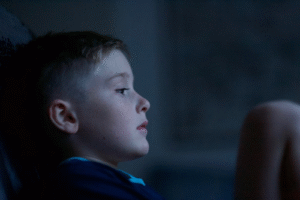Beyond the Session: Why Family-Centered Behavioral Care Is the Future of Autism Therapy

When a child is diagnosed with autism, families are often ushered into a maze of assessments, appointments, and therapy sessions. Applied Behavior Analysis (ABA) often becomes the central focus, a structured, evidence-based approach to support behavior and development. But amid the schedules and strategies, a crucial element is often sidelined: the family itself.
As therapy providers across Texas expand to meet growing demand, one question must guide the future of autism care: Are we treating just the child, or are we supporting the entire household?
The Problem with “Drop-Off Therapy”
In traditional clinic-based models, a parent might drop their child off for therapy, receive a few updates, and repeat the routine several times a week. While technically effective, this model leaves families feeling disconnected and unsure of how to support their child outside of structured sessions.
This approach has its limitations:
- Parents feel under-equipped to manage behaviors at home.
- Skills don’t generalize across settings (home, school, community).
- Family stress increases, leading to burnout and disengagement.
The therapy might be consistent, but the outcomes are inconsistent.
Why Family-Centered Models Work Better
Family-centered behavioral care recognizes that children don’t grow in silos. They grow in relationships, routines, and real-life environments. By integrating caregivers into the therapy process from the start, providers can deliver care that is not only clinically effective but also emotionally sustainable.
What This Looks Like in Practice:
- Parent coaching as a core service, not an afterthought
- Goal-setting that includes family priorities and cultural values
- Therapists observing and collaborating in real-life settings like grocery stores, churches, or family events
- Regular check-ins that go beyond progress data, asking parents how they’re coping, what’s working, and what’s not
This model empowers caregivers to become confident allies, not just passive observers.
Texas Providers Leading the Way
In communities across Texas, especially suburban and rural areas like McKinney, a shift is happening. More ABA providers are offering autism therapy at home, bringing care into the family’s environment and training parents in real time.
Some programs go further by offering Christian ABA therapy or culturally aligned services that honor each family’s values and beliefs. This personalization deepens trust and strengthens the therapeutic relationship.
As one article on how ABA providers can grow without losing what matters most explains, quality isn’t just about systems; it’s about people. And sustainable growth means building models that prioritize the caregiver just as much as the child.
Parents Are the Constant
While therapists may change, sessions may evolve, and programs may scale, one thing remains constant: the parent.
Family-centered therapy ensures that caregivers:
- Understand the “why” behind each strategy
- Learn how to respond in real-world scenarios
- Have a voice in their child’s goals and progress
- Feel empowered instead of overwhelmed
This isn’t just better for the parent. It leads to more consistent skill development, fewer setbacks, and deeper trust between families and providers.
What Families Should Look For
If you’re seeking autism therapy in Texas, ask providers:
- How do they involve families in sessions and planning?
- Is parent coaching included in the care plan?
- Are there options for home-based therapy or telehealth?
- Can the care model be adapted to reflect your faith or cultural values?
- What support exists for caregiver stress or emotional health?
These questions reveal whether a provider is invested in your whole family’s success, not just your child’s milestones.
The Future of Therapy Is Collaborative
Family-centered behavioral care isn’t a trend; it’s a necessity. As more providers expand to meet rising needs, especially in underserved areas, the best among them will do more than offer therapy. They’ll build partnerships.
Because real progress doesn’t only happen in the clinic. It happens at home. In routines. In relationships. Beyond the session.








